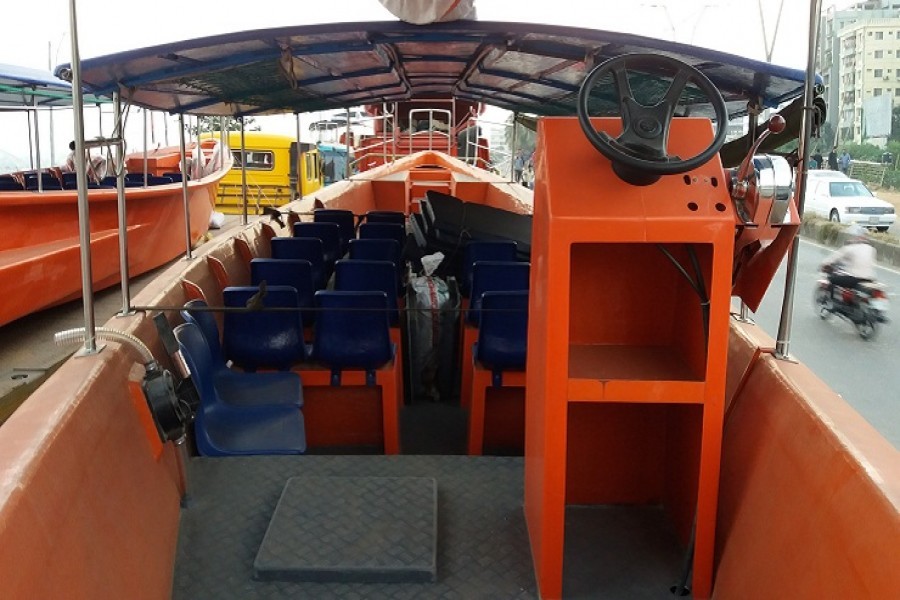Against the backdrop of the miserable failure of the circular water bus service two times since 2004, the planned opening of yet another such service on the Sadarghat-Keraniganj route has perplexed a lot of people. The former service was launched by Bangladesh Inland Water Transport Corporation (BIWTC), on the 29-kilometre route from Gabtoli in the north to Badamtoli to the south.
The latest route is set to be operated by Bangladesh Inland Water Transport Authority (BIWTA) which runs a fleet of 12 water buses. Eleven of the entity's vessels operate between Gabtoli and Waizghat, on the bank of the Buriganga, and on Narayanganj-Tongi route. One vessel has been rented out to a private organisation for its tourism service.
The Dhaka commuters who have been observing the lackadaisical performance of the water buses on the western fringe of the city for the last 15 years have reasons for being annoyed with yet another such service.
According to media reports, the Gabtoli-Badamtoli service had been incurring losses to the tune of Tk 40,000 a day on operating vessels on the route. It continued until the authorities almost shut the losing service. Incredibly enough, before nearly closing the route, six more vessels had been added to the existing fleet. To add to the incredulity of the disillusioned people, five (05) more water buses were also poised to be added to the already under-performing fleet in the near future. BIWTC's 29-km circular water bus service now aims to cover the route touching Sadarghat, Gabtoli, Aminbazar, Ashulia, Tongi, Purbachal, Demra, Kanchpur, Mir Kadim and Fatullah. The route is set to run along the embankment area of Buriganga, Turag, Balu and Shitalakkhya rivers.
The project is apparently grand. Given its sheer length, it could be expected to solve a major volume of Dhaka's traffic gridlock debilitating the city's roads. Unfortunately, since the very beginning in 2004, the water buses have failed to draw sufficient passengers to the commuting service. It began as a non-starter. Although the vessels witnessed tolerably significant number of passengers in the first couple of months, it began dropping as days wore on. At one phase, the buses were seen operating with just two or three passengers per trip. The photographs of these vessels printed in newspapers had simply stunned many.
The failure of the service was blamed on a number of reasons. First of all, the speed of the small launches could not be made faster due to obstructions created by raised underwater land patches. During winter, the water buses had to cut down on their operations drastically. Many others had to change their routes in order to move along those having the required depth. This would delay the travel time, which few busy and time-constrained people could afford. The longer-than-usual commuting eventually prompted the passengers to return to the age-old bus journeys, except during monsoon -- ideal for water bus movement. In spite of being jostled by sweating co-passengers, the bus journeys could at least take them to their destinations faster than those by water transports. Besides, dearth of safe landing facilities at many stations discouraged people from using the water buses.
Few cities in the world are encircled by four rivers. In the case of Dhaka, they include three large rivers. It indeed makes one feel sad that Dhaka could not utilise its rivers as effective circular water bus routes. Time is not completely over yet. The said rivers can be restored to their earlier vibrancy through drastic cleaning and dredging. Compared to them, the planned Sadarghat-Keraniganj water bus route is expected to benefit people considerably. Among others, it might help passengers from Keraniganj on the other side of Buriganga board on time the long-distance launches leaving the Sadarghat terminal.


